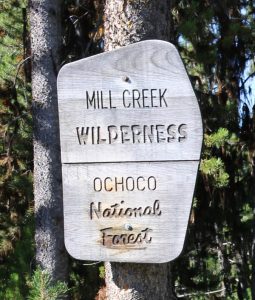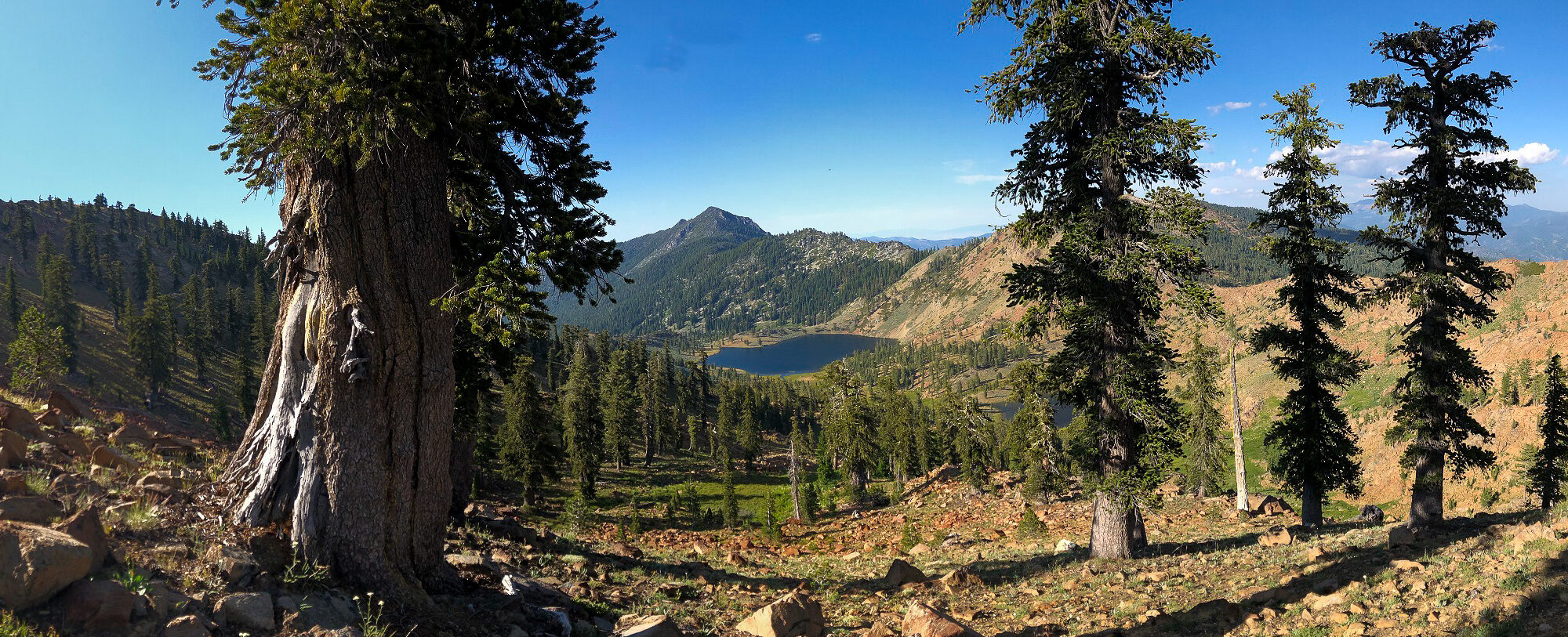I could not be more proud of our new book. It is, in reality, a project 10-years in the making. I first started cooking up the idea when I finished Conifer Country in 2012 based on the fact that a natural history had never been written for the Klamath Mountains. Around 2015, during a winter gathering, I proposed an outline to a group of friends and asked who wanted to help write the book with me. Justin Garwood raised his hand and the rest is now history!
Continue reading “The Klamath Mountains: A Natural History”Mill Creek Wilderness
 The main event has been on the calendar for the past eight years. I have heard stories from friends who have actually traveled around the world to see the phenomenon–and from that alone I knew if there was and eclipse practically in our backyard, we needed to go. We selected a spot in the heart of the Ochoco National Forest and literally on the edge of the Mill Creek Wilderness in a meadow complex. The Mill Creek Wilderness Twin Pillars Trail was our hiking destination the day before the eclipse event. The wilderness protects a harsh environment typified by ancient lava flows, fire-prone conifer forests, and the Mill Creek Drainage itself. We found wonderful views across central Oregon and a fire-scared landscape on our way to the Twin Pillars. In addition, western larch (Larix occidentalis), was the conifer highlight on this adventure.
The main event has been on the calendar for the past eight years. I have heard stories from friends who have actually traveled around the world to see the phenomenon–and from that alone I knew if there was and eclipse practically in our backyard, we needed to go. We selected a spot in the heart of the Ochoco National Forest and literally on the edge of the Mill Creek Wilderness in a meadow complex. The Mill Creek Wilderness Twin Pillars Trail was our hiking destination the day before the eclipse event. The wilderness protects a harsh environment typified by ancient lava flows, fire-prone conifer forests, and the Mill Creek Drainage itself. We found wonderful views across central Oregon and a fire-scared landscape on our way to the Twin Pillars. In addition, western larch (Larix occidentalis), was the conifer highlight on this adventure.
Kalmiopsis leachiana
Survival in a land of extremes
Original Publication DATE: 6/3/2010
With the end of the school year in site, my calcifuge tendencies had me running to the hills. Ever since our winter trip to Hawaii I have been pondering the Ericaceae family, gaining a new found love for this diverse group of plants. I also knew that they, like me, had a propensity to ‘flee from chalk’ so to speak. Ericaceous plants generally prefer, if not acidic soil, a harsh medium on which to grow. Could this familial disposition–to thrive in the presence of harsh soil–be due to the extant members of this tribe having evolved from a common ancestor? I thought I must visit one of the oldest members of the family and get to know where they grew and what they knew or could share. Though I have been hearing the call of the Kalmiopsis for many years, I had failed to yet make the trek into this remote country. With snow lingering this spring, keeping me from my typical high Siskiyou destinations, the time was right for Oregon’s second largest wilderness. The lower elevation wilderness is so named after a relict plant Lilla and John Leach discovered here in 1930.
Continue reading “Kalmiopsis leachiana”Subalpine Fir in the Red Buttes Wilderness
Original Publication Date: 8/8/2010
In 1969 Dale Thornburgh and John Sawyer discovered the first subalpine fir in California and also in the Klamath Mountains. This discovery was made in the vicinity of Russian Peak in what is now the Russian Wilderness. Since that time the species has been found in a total of eight locations in California’s Klamath Mountains and twice in Oregon’s Klamath. One of those Oregon locations is near Mt. Ashland and the other was recently discovered by Frank Callahan to the east in the Red Buttes Wilderness. This second location, in an isolated cirque on the north side of Tannen Peak was my destination–with Frank Callahan as my guide. Continue reading “Subalpine Fir in the Red Buttes Wilderness”
Yellow-cedar of the Aldrich Mountains, Oregon
Original Publication DATE: 8/23/2010 1:54:00 PM
